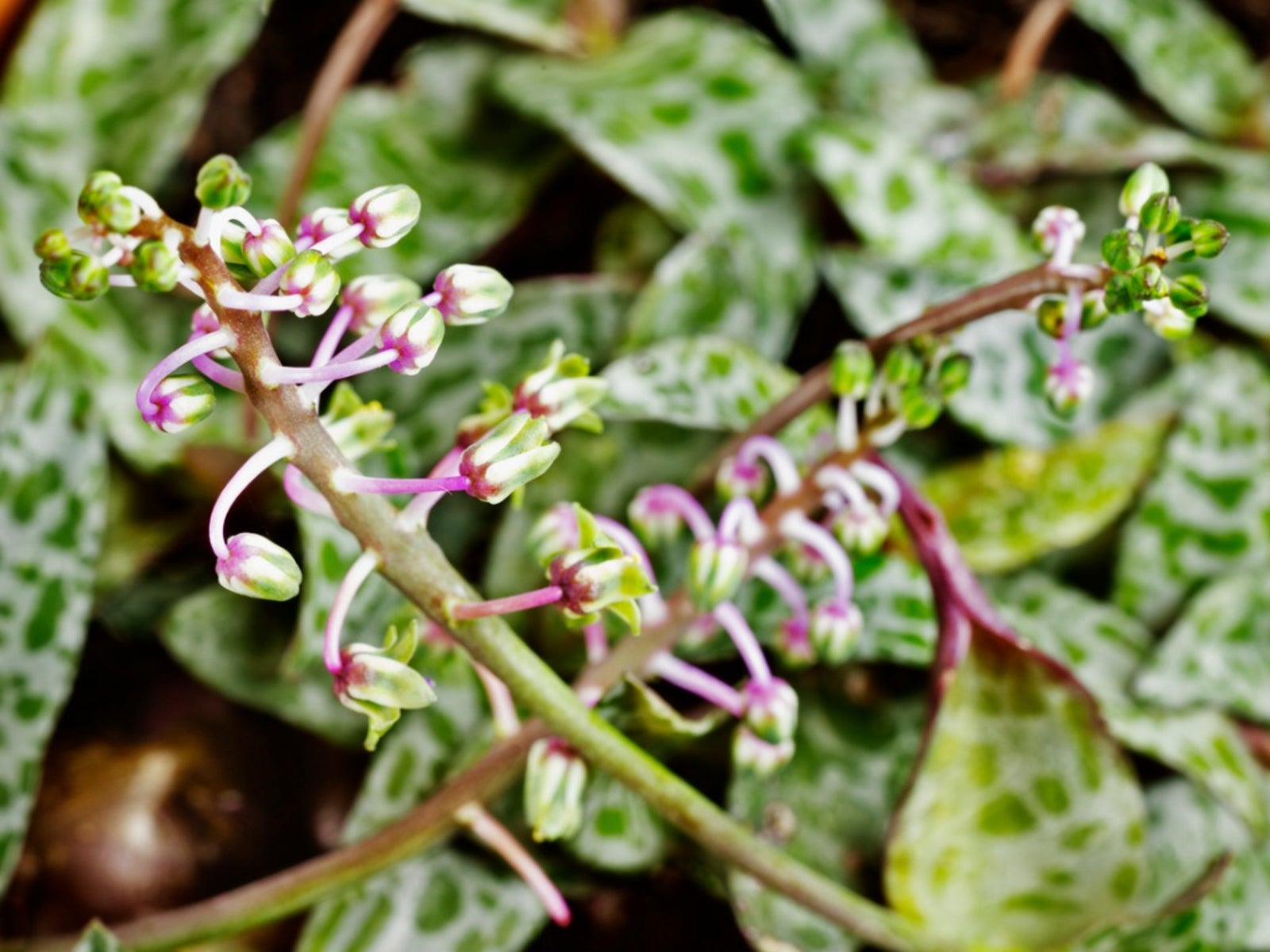Ledebouria Silver Squill – Tips On Caring For Silver Squill Plants


Ledebouria silver squill is one tough little plant. It hails from the Eastern Cape Province of South Africa where it grows in dry savannas and stores moisture in its bulb-like stems. The plants make interesting houseplants that are colorful and structurally unique. Caring for silver squill plants is actually quite easy provided you can give them a winter rest period in a cool area of the home, or you can grow them outdoors in USDA zones 10 to 11.
Silver Squill Information
Silver squill (Ledebouria socialis) is related to hyacinth. It is commonly sold as a houseplant but would make an excellent groundcover in warm-season regions. These are drought-tolerant and would be perfect in xeriscape gardens. A unique bit of silver squill information is that it is not a succulent, although it resembles one and has the drought tolerance of the group. Silver squill has unique, teardrop-shaped bulbs that form above the ground. They look like little purple bladders and can store moisture in times of drought. The leaves spring from these structures and are lance-shaped and silver spotted with purple undersides. In summer, pink stems form, bearing small greenish flowers. The entire plant only gets 6 to 10 inches (15-25 cm.) tall with a rosette formed from foliage out of the bulbs. All parts of the plant are thought to be poisonous (keep in mind around small children and pets). In warm regions, try growing silver squill in rockeries or in partially shady areas of the garden.
Silver Squill Propagation
Growing silver squill is extremely easy. Those bulbs that were mentioned will increase over the years until the plant is crowded in its pot. The next time you repot it, you can separate away some of the bulbs to start new plants. Wait until flowers have faded, un-pot the plant, and gently break away the bulbs. Pot up each section with 1/3 to 1/2 of the bulb out of the soil. Place no more than three bulbs per container. Immediately water and continue the usual practices of caring for silver squill plants. While silver squill propagation is possible through seed, germination can be capricious, and growth is very slow.
Caring for Silver Squill Plants
Ledebouris silver squill requires bright but indirect sunlight. Interior temperatures are fine for silver squills grown as houseplants, and outdoor plants can withstand winter temperatures down to 30 degrees F. (-1 C.). Try growing silver squill outdoors during spring and summer when ambient temperatures are at least 60 degrees F. (15 C.). In cold regions, move the plant back indoors. Once established, water needs are minimal. Allow the top inch (2.5 cm.) to dry out before irrigating in spring and summer. Once winter has arrived, the plant is in its rest phase (dormancy) and watering should be cut in half. During the growth season, apply liquid fertilizer once per month.
Gardening tips, videos, info and more delivered right to your inbox!
Sign up for the Gardening Know How newsletter today and receive a free copy of our e-book "How to Grow Delicious Tomatoes".

Bonnie Grant is a professional landscaper with a Certification in Urban Gardening. She has been gardening and writing for 15 years. A former professional chef, she has a passion for edible landscaping.
-
 Terrifically Tubular Flowers For Hummingbirds: 9 Tube-Flowered Plants To Attract Hummers
Terrifically Tubular Flowers For Hummingbirds: 9 Tube-Flowered Plants To Attract HummersGrowing tubular flowers for hummingbirds helps you create the optimum feeding conditions for your winged friends. Here are nine tubed delights for hummers
By Tonya Barnett
-
 How To Grow Hydroponic Tomatoes For Fresh Indoor Harvests – No Soil Required
How To Grow Hydroponic Tomatoes For Fresh Indoor Harvests – No Soil RequiredLearning how to grow tomatoes in water is easy and allows you to harvest fresh-home-grown produce in every season without any mess.
By Ellen Wells